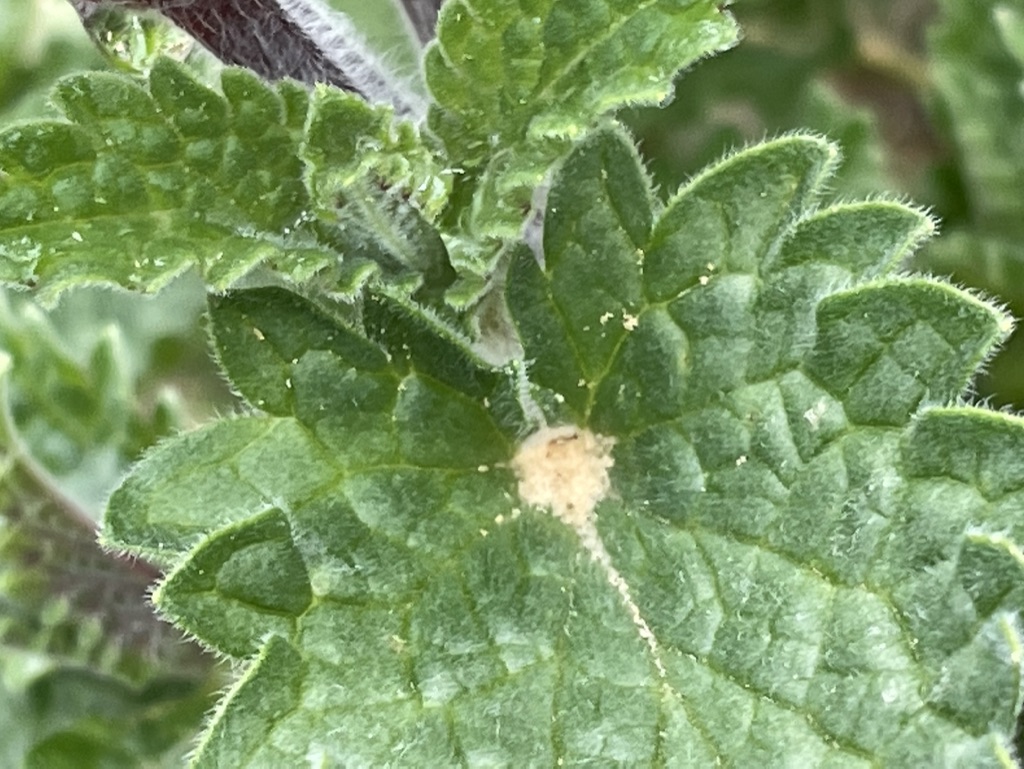I’ll Have Some Salad Said the Spider!

Did you know spiders don’t just eat bugs? That’s right! You can amaze your friends when you share your knowledge about our eight-legged friends chowing down at the salad bar.


Researchers have observed various species of spiders (over 60 species worldwide) feeding on plant foods to supplement their invertebrate prey (Nyffeler et al. 2016). What exactly does this mean? Are they going to eat the leaves of your garden plants? Nah! Not to worry. They are primarily pest predators in your garden – little helpers to keep those aphids away.
Spiders have long been thought to only consume insects and other invertebrates. However, in recent studies, we are finding this isn’t entirely the case. Observations of spiders foraging in nature has broadened our understanding of the diets of our arachnid friends. Our prior assumptions were incorrect. Spiders actually eat pollen grains, floral and extra-floral nectar, Beltian and Müllerian bodies (structures produced by plants on their leaf tips or petioles, plant sap, honeydew (a plant-derived sugar produced by homopteran insects like aphids), seeds, spores, and even the vegetative material in the guts of their invertebrate prey (Nyffeler et al. 2016).

I found several papers on this topic, but one of the most interesting to me talked about how pollen is an important source of protein for spiders in early spring when prey may be scarce. It also pointed out that pollen is a critical food source for newly hatched spiderlings. Baby Orbweavers for instance. We have these here in the San Juans. They are delightful!

Well, since the pollen floats through the air, quite a lot will stick to webs, landing exactly where the little spiders can easily access it. Smith and Mommsen (1984) even found that Orb Weaver spiderlings doubled their life expectancy by eating pollen. Eggs and Sanders (2013) concur that pollen is an important dietary supplement for Orb Weaver spiders and found that juvenile orb weaving spiders’ diets consist of approximately 25% pollen.
So, now you know! Our little spider friends, or some of them at least, are more complex than we knew. It’s a good reminder about how important it is to eat a varied and healthy diet. We can put this into practice ourselves. Good nutrition is vital for health and survival – for all living beings.
References
Eggs B, Sanders D (2013) Herbivory in Spiders: The Importance of Pollen for Orb-Weavers. PLoS ONE 8(11): e82637. https://doi.org/10.1371/journal.pone.0082637 https://journals.plos.org/plosone/article?id=10.1371/journal.pone.0082637
Nyffeler, M., Olson, E. J., & Symondson, W. O. C. (2016). Plant-eating by spiders. The Journal of Arachnology, 44(1), 15–27. http://www.jstor.org/stable/24717357 https://www.google.com/url?sa=t&rct=j&q=&esrc=s&source=web&cd=&cad=rja&uact=8&ved=2ahUKEwjp9dWF97n3AhXQLTQIHTh1CF0QFnoECBsQAQ&url=https%3A%2F%2Fwww.jstor.org%2Fstable%2F24717357&usg=AOvVaw0mZYSQxF6kMinvaqvgB4UT
Smith RB, Mommsen TP. Pollen feeding in an orb-weaving spider. Science. 1984 Dec 14;226(4680):1330-2. doi: 10.1126/science.226.4680.1330. PMID: 17832631. https://www.science.org/doi/10.1126/science.226.4680.1330










